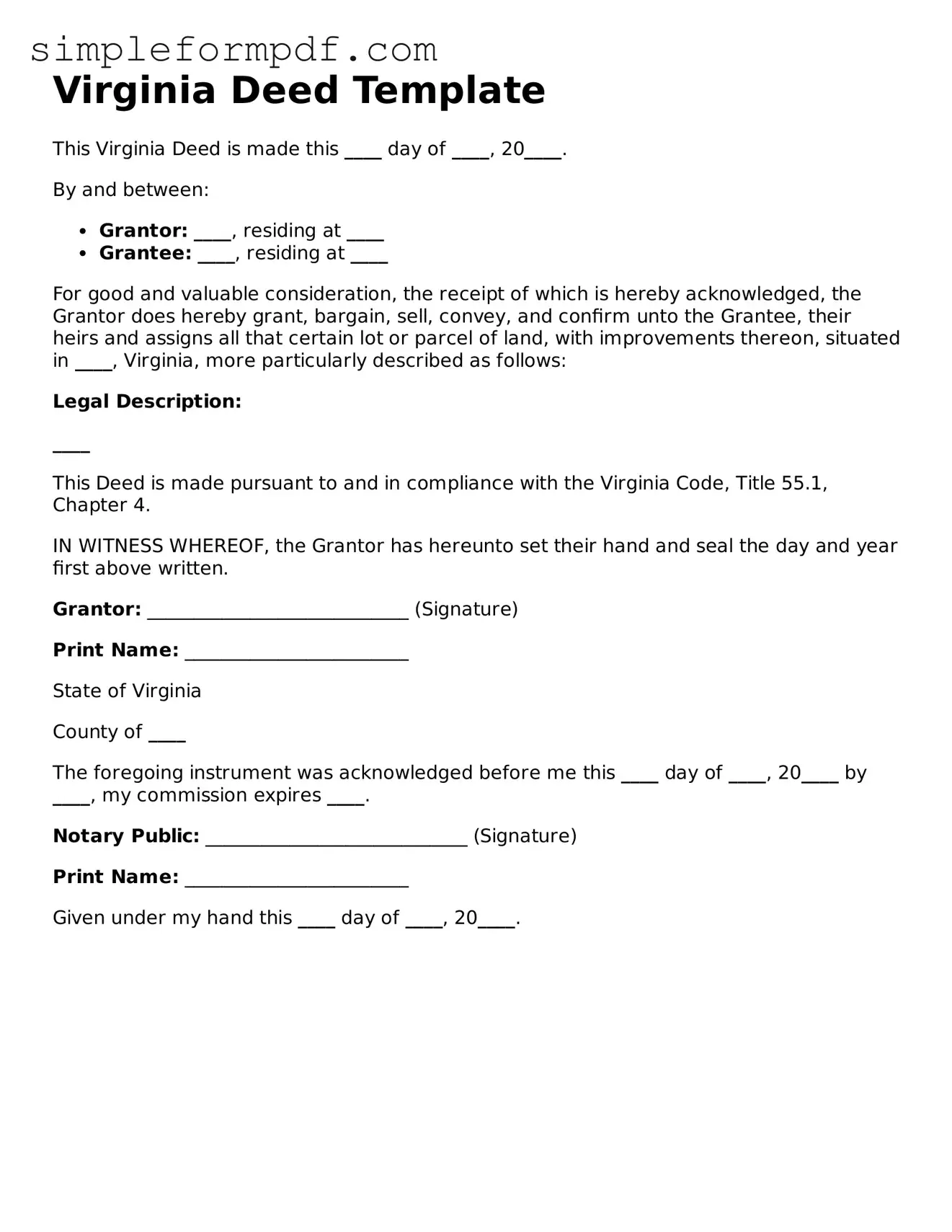Virginia Deed Template
This Virginia Deed is made this ____ day of ____, 20____.
By and between:
- Grantor: ____, residing at ____
- Grantee: ____, residing at ____
For good and valuable consideration, the receipt of which is hereby acknowledged, the Grantor does hereby grant, bargain, sell, convey, and confirm unto the Grantee, their heirs and assigns all that certain lot or parcel of land, with improvements thereon, situated in ____, Virginia, more particularly described as follows:
Legal Description:
____
This Deed is made pursuant to and in compliance with the Virginia Code, Title 55.1, Chapter 4.
IN WITNESS WHEREOF, the Grantor has hereunto set their hand and seal the day and year first above written.
Grantor: ____________________________ (Signature)
Print Name: ________________________
State of Virginia
County of ____
The foregoing instrument was acknowledged before me this ____ day of ____, 20____ by ____, my commission expires ____.
Notary Public: ____________________________ (Signature)
Print Name: ________________________
Given under my hand this ____ day of ____, 20____.
